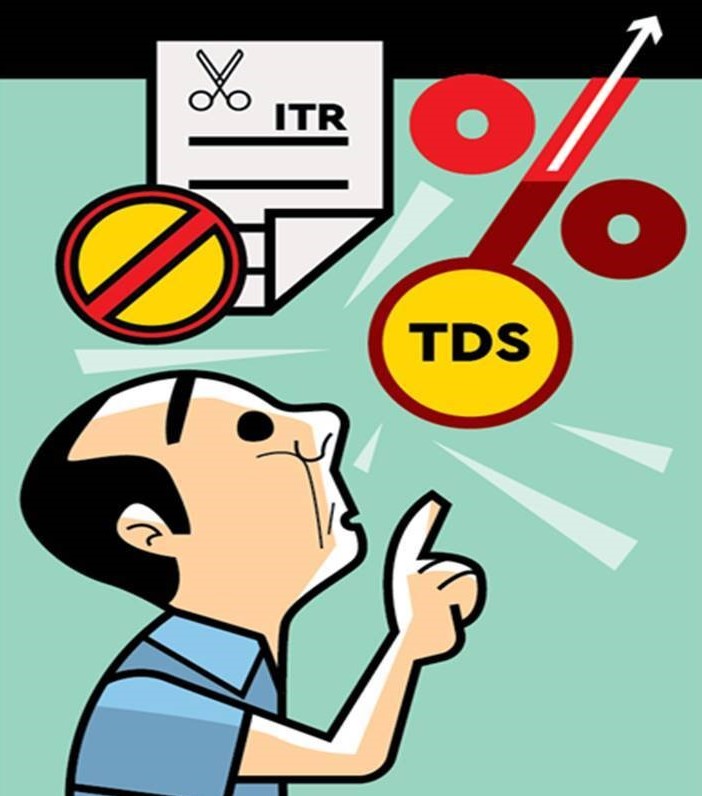
Reliable - TDS return
TDS Return is a quarterly statement submitted by the deductor to the Income Tax Department. The statement shows a summary of all the entries for TDS collected by the deductor and the TDS paid by the deductor to the Income Tax Authority.
Failure to furnish PAN
Any person receiving payment for which tax has been deducted at source is required to obtain a valid PAN (if not obtained) and furnish the correct PAN to the deductor. Care must be taken to furnish the correct PAN, so that the tax deducted can be credited to correct account. Further, non-furnishing of PAN or furnishing of incorrect PAN would result in the deducted incurring higher TDS at 20% rate and levy of penalty of ten thousand rupees.
What is TDS Certificate?
Form 16, Form 16A, Form 16B, and Form 16C are the types of TDS certificates as per the Govt. guidelines. TDS certificates have to be issued by a person deducting TDS to the assessee from whose Income TDS was deducted while making payment.
For instance, banks issue Form 16A to the depositor when TDS is deducted on interest from fixed deposits. Form 16 is issued by the employer to the employee.
For instance, banks issue Form 16A to the depositor when TDS is deducted on interest from fixed deposits. Form 16 is issued by the employer to the employee.
How should be the agreement between partners formed?

Partnership deed is an agreement between the partners in which rights, duties, profits shares and other obligations of each partner is mentioned.
Partnership deed can be written or oral, although it is always advisable to write a partnership deed to avoid any conflicts in the future.
Types of TDS Return Forms:
- Form 24Q – Tax deduction statement at the source of salaries
- Form 26Q – Tax deduction statement at the source of payments other than salaries
- Form 27Q – Tax deduction statement on income received from dividends, interest or any other sum payable to non-residents
- Form 27EQ – Tax collection statement at the source of income
When should TDS be deducted and by whom?
- Any person making specified payments mentioned under the Income Tax Act, 1961, are required to deduct TDS at the time of making such specified payment.
- TDS is a type of Advance Tax which the Government of India levies on a periodic basis.
- The overall deducted TDS is claimed as tax refund after a taxpayer files the Income Tax Return.
- TDS return is applicable for multiple types of payments including Salary, Commission earned, Rent , Interest Payment by Bank, Professional Fees, etc.


Who can deduct TDS?
- The person making the specified payment as per the Act is liable for TDS deduction.
- That Individual or Organisation is liable to deduct the sum at specified rate and deposit it to the Government within every financial year.
What is the due date for depositing TDS to the government?
- The Tax Deducted at Source must be deposited to the government by 7th of the subsequent month.
How to register the partnership firm?
An application form along with fees is to be submitted to Registrar of Firms of the State in which firm is situated. The application has to be signed by all partners or their agents.

How and when the TDS is required to be filed?
- Filing Tax Deducted at Source returns is mandatory for all the persons who have deducted TDS.
- TDS return is to be submitted quarterly and various details need to be furnished like TAN, Amount of TDS Deducted, Type of Payment, PAN of Deductee, etc.
- Also, different Forms are prescribed for Filing Returns depending upon the purpose of the deduction of TDS.
- Filing Tax Deducted at Source returns is mandatory for all the persons who have deducted TDS.
- TDS return is to be submitted quarterly and various details need to be furnished like TAN, Amount of TDS Deducted, Type of Payment, PAN of Deductee, etc.
- Also, different Forms are prescribed for Filing Returns depending upon the purpose of the deduction of TDS.